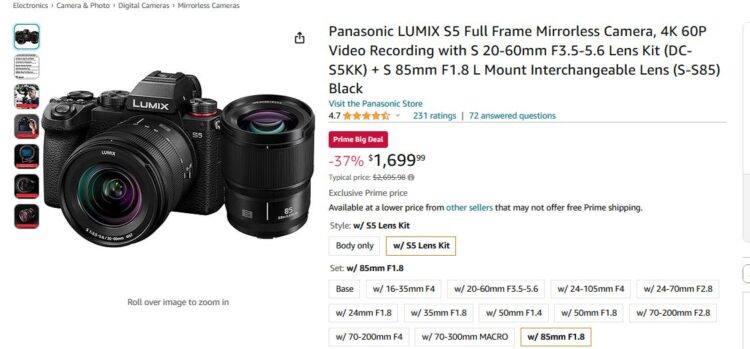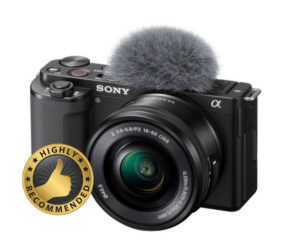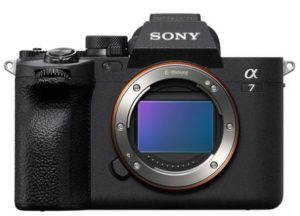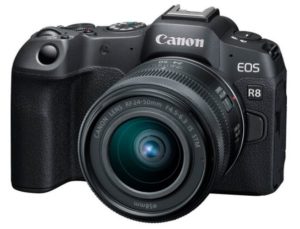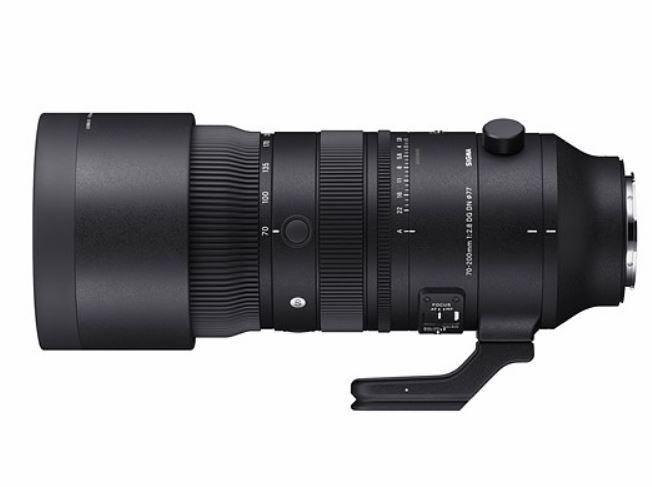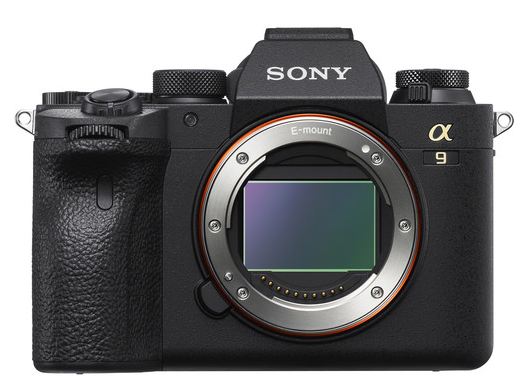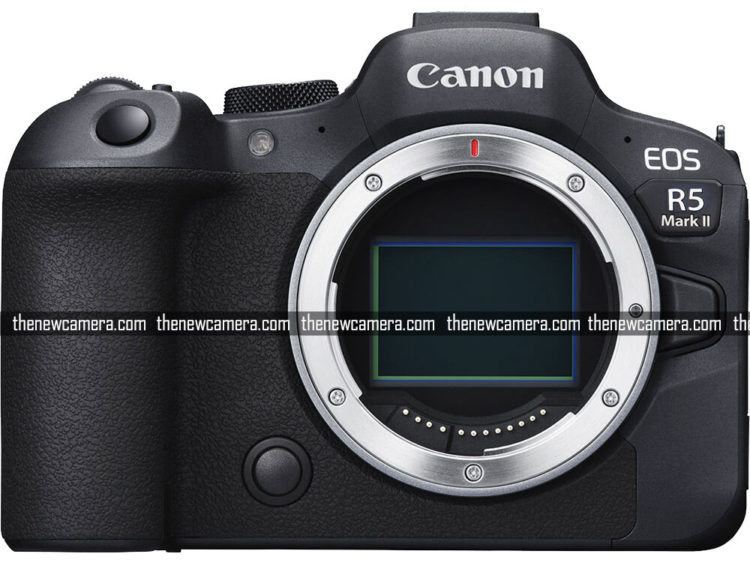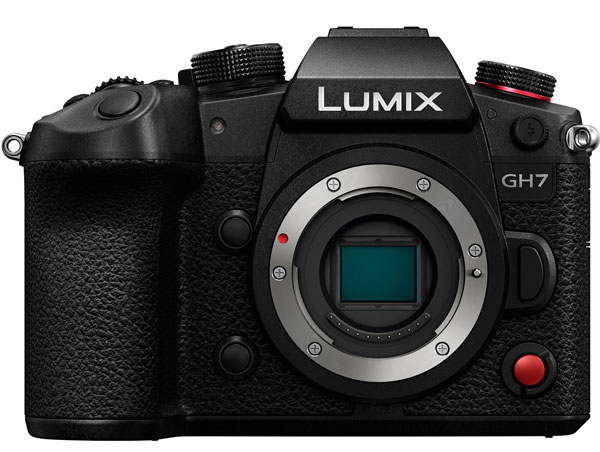Neewer Photo Studio Backdrop Support System is available at $31 ONLY but in minimal quantities, so hurry up and grab it until stock lasts.
|
||||||||||
|
Panasonic S5 Camera Prime Day Deals on Amazon – The Panasonic S5 camera is now available at $1699 ONLY. Check out the deal if for limited time
Check out the latest Early PRIME Deals 2023 page at Amazon.com Amazon PRIME DAY DEALS Main Page – https://amzn.to/3LTQJXY Camera and Lenses Deals Page here: https://amzn.to/3F4FR61 1. Amazon Prime Day Deals on Sony Cameras 2023
2. Amazon Prime Day Deals on Canon Camera 2023
Sigma has finally completed its trio by releasing a 70-200mm lens for Sony E-mount. I’ve been eagerly awaiting this lens, especially since Tamron already has their trio for Sony E-mount. It’s been quite some time since they announced the 70-180mm RXD series lens. The first version was announced back in April 2020, and its updated version was announced in August 2023. I’m looking forward to the official announcement of the lens. Very soon, it will become available to us, and we will have at least one more option in the trio series, after the G Master lenses from Tamron, and finally, Sigma. Sigma 70-200 Development announcement press releaseDevelopment announcement of SIGMA 70-200mm F2.8 DG DN OS|Sports The SIGMA Corporation is pleased to announce the development of the SIGMA 70-200mm F2.8 DG DN OS | Sports. The SIGMA 70-200mm F2.8 DG DN OS | Sports is a large-aperture zoom lens for full-frame mirrorless cameras. In addition to the expressive imaging capabilities owing to the latest optical design, the lens offers a high level of performance and features that meet the expectations of professionals in both still and video, including high-speed autofocus with HLA (High-response Linear Actuator), optical stabilizer with the latest algorithm “OS2”, and the superior weather resistance of SIGMA’s Sports line. Combined with the SIGMA 14-24mm F2.8 DG DN | Art and the SIGMA 24-70mm F2.8 DG DN | Art, SIGMA’s three zoom lenses for full-frame mirrorless cameras with a bright F2.8 constant aperture cover a wide range of focal lengths. Launch: December, 2023 Follow us on our social pages FACEBOOK | TWITTER | INSTAGRAM, If you have time –>see more Sony Alpha Rumor
According to the latest news we have from the rumor mill, there is a high possibility that Sony may announce a full-frame camera, possibly the Sony A9 Mark II, on November 8, 2023. Not only the camera, Sony is also expected to announce a new 300mm lens and a major update to the Sony Alpha A1 firmware. Stay tuned more updates coming Follow us on our social pages FACEBOOK | TWITTER | INSTAGRAM, If you have time –>see more Sony Alpha Rumor
According to the latest rumors, the Canon R5 Mark II camera to arrive in February of 2024. The reason is quite simple. Canon has a habit of releasing its flagship / Pro Cameras just prior to the Olympic games. We have seen this pattern in the past as well. So, in 2024, the Olympics are set to start in July. Therefore, there is a high probability that Canon will release the EOS R5 Mark II camera. At the same time, we have heard rumors about the Canon EOS R1 flagship camera for the past year. If these rumors are true, then the timelines for the Canon EOS R5 Mark II camera and the Canon EOS R1 are pretty close to each other and both are expected to arrive before the 2024 Olympics. So, we have to wait for further confirmation. But with the set of all the information we have, one thing is for sure: either the Canon R5 Mark II or the Canon EOS R1 will arrive before the Olympics of 2024. Get LIVE RUMORS –> FACEBOOK | TWITTER | INSTAGRAM to get live news + Canon rumors 24X7 caminsider
The Panasonic GH7 is expected to arrive with a hybrid autofocus sensor. This technology started from the Panasonic S5 Mark II, then Panasonic implemented its first hybrid Micro Four Thirds CMOS sensor in the Panasonic G9 Mark II camera, and finally, we are expecting the same sensor to arrive inside the Panasonic GH7. The camera is set to arrive in Q4 of 2024. This is not so soon. We will post an update as soon as more details become available. Follow us on our social pages FACEBOOK | TWITTER | INSTAGRAM, to get LIVE News and Panasonic Rumor source 43rumor |
||||||||||
|
New Camera Website, we list all type of new camera information, price review and all type camera rumors, subscribe us or follow us via twitter or facebook. 180 queries. 0.131 seconds. |
||||||||||


